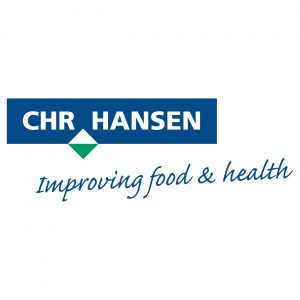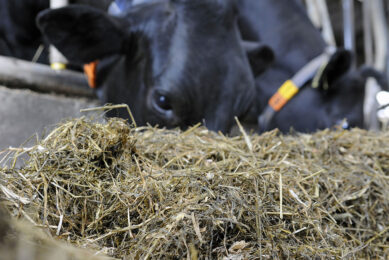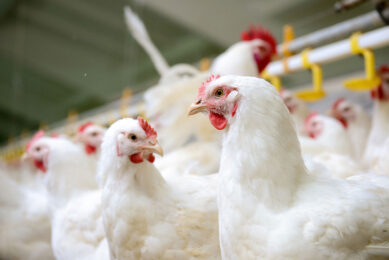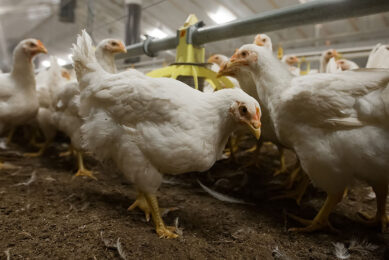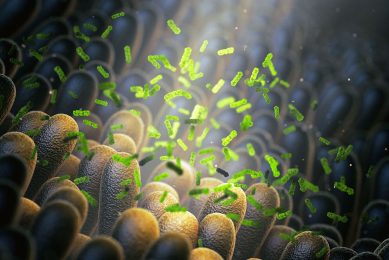The power of good bacteria for your herd
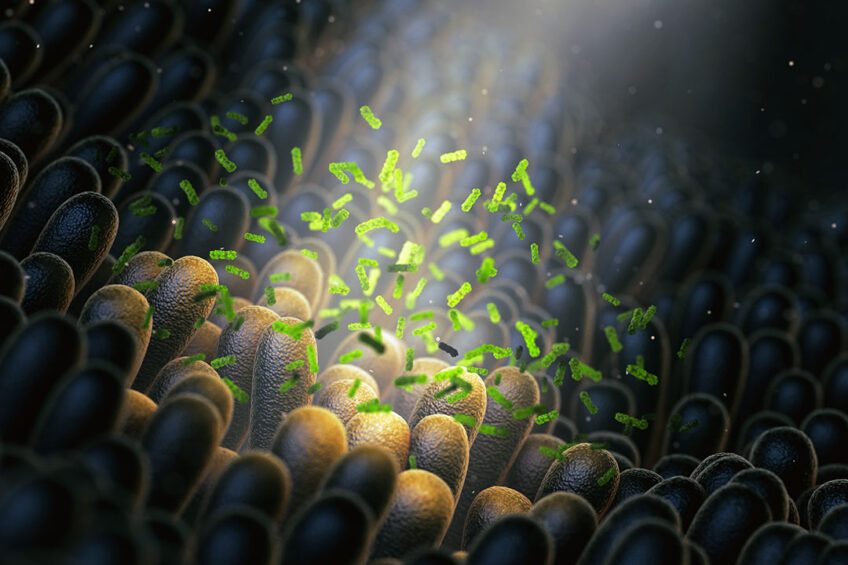
Human beings and animals are born with a set of bacteria that help to cope with adverse health events. In this article the benefits of using good bacteria (also called probiotics) are explored to support the profitability and sustainability of dairy farms.
Have you ever thought that, in total, we are surrounded by more bacteria than people? Have you ever realised that we, humans, have billions of bacteria living inside and on the surfaces of our body? Have you ever thought that bacteria inside our bodies confer us health benefits? Have you ever thought that exogenous bacteria, when provided through food, for example, could also bring supportive effects to our health and immunity? All that said, if bacteria are important for us, supporting our health, why would they not be important for your dairy cattle herd?
We, and our animals, are born and grow with a set of bacteria that help us cope with adverse health events, keeping the homeostasis of the body in balance. However, there are also good bacteria that may not be present and, if present, they may be insufficient in number. This is unfortunate as they can deliver additional synergistic effects to the established microbiota in our bodies. These good bacteria, also called probiotics, are often found in nature, living among us, and they bring health benefits to the host, when consumed in adequate amounts.
At Novonesis, we collect, study, select and grow natural good bacteria that can be fed to livestock animals. Good bacteria are tested and re-tested to comply with all the strict safety and quality standards of the European Union, ensuring that a safe feed additive is offered to customers. Ultimately, feed additives are developed and launched to meet the expectations of the current challenges faced by the dairy production industry.
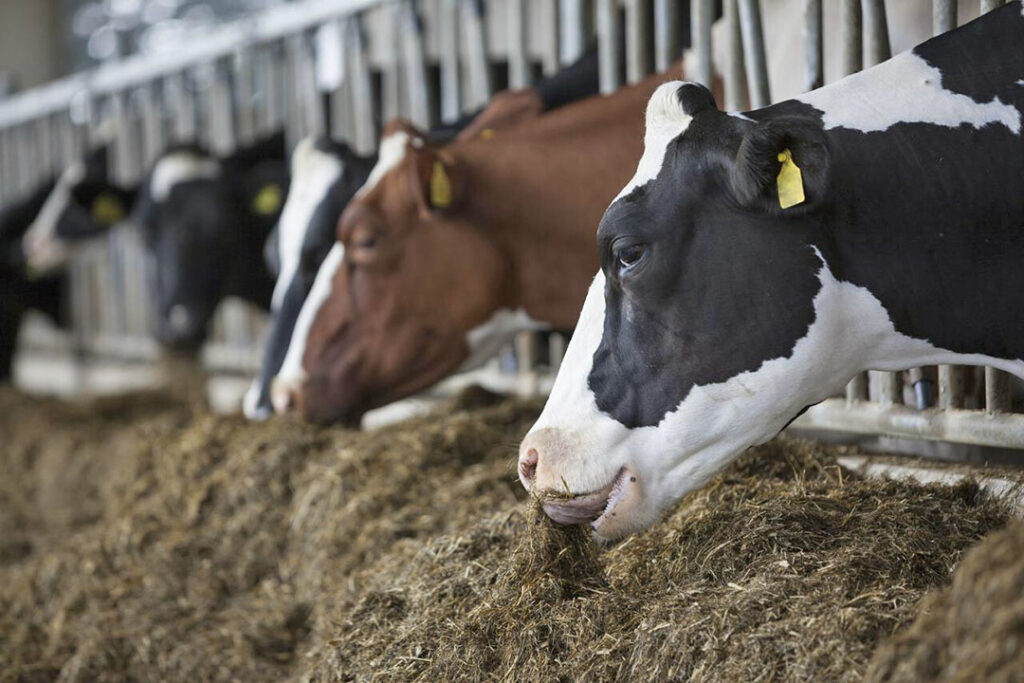
“Strain matters”
Bacteria, just like humans, are not all the same. They are from different families, genus, species and even strains that will have different abilities. As an example, one of the features of good bacteria is to support dairy cattle’s health by, for example, stimulating mucin production in the gastrointestinal tract (GIT). Mucins are important players in supporting the gut health of dairy calves and cows, for example, as these molecules form a physical, chemical, and immunological defensive barrier between the environment and the organism. Therefore, stimulating the production of mucins would support the herd’s well being, alleviating the effects of potential challenges to the dairy cattle herd. As shown in Figure 1, different strains of the same genus and species of a good bacteria (eg. Bacillus subtilis), which is often fed as a feed additive to the dairy cattle herd, lead to different concentrations of a specific type of mucin, demonstrating that it is imperative to understand and study each strain to be used for functional advantage for your herd. This is why we like to say that “strain matters” and the proper selection of the strain will probably impact the results of your operation.
The example presented demonstrate that strains differ on how they can promote a supportive effect on the animal.
Figure 1 – In vitro mucin production of cells following the addition of different Bacillus subtilis strains.
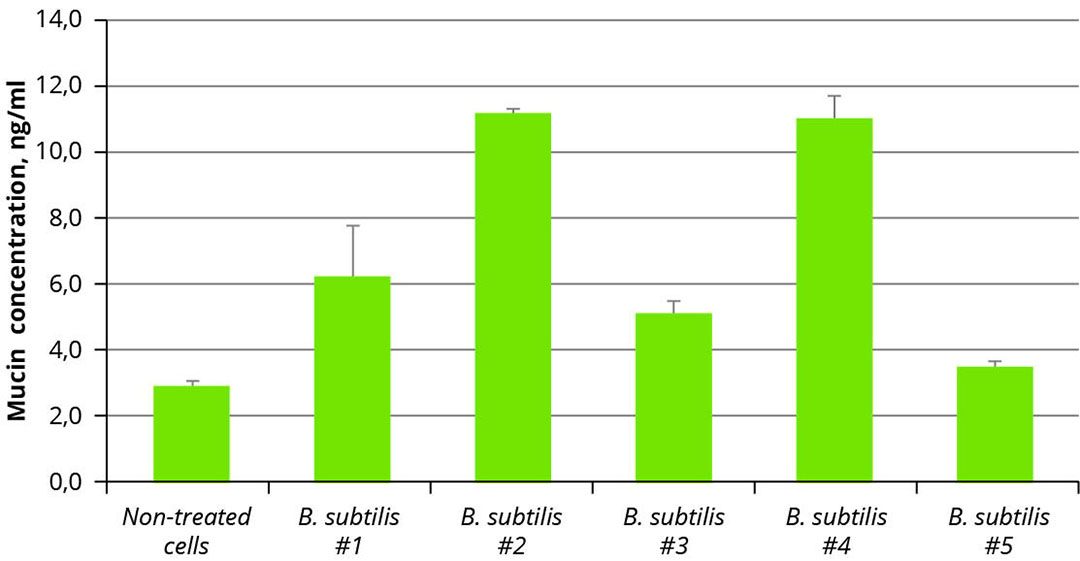
The health supportive effects
Per definition, good bacteria fed to the dairy cattle herd should confer health-supportive effects to the host, so it is desirable to briefly describe which tools are available and employed by the good bacteria to support the health of the herd.
Starting with the dairy calf, which still does not have a fully developed and functional rumen, the major initial supportive effects of the good bacteria are focused on the lower GIT. Depending on the bacteria genus and species, these effects include:
i. Mucin production leading to a larger mucous barrier thickness that supports the integrity of the cells in the GIT
ii. modulation of the immune system, from a local and systemic standpoint
iii. production of organic compounds that ultimately modulate the pH of the environment
iv. production of digestive and defensive enzymes
v. biofilm formation
vi. stimulation of the production of antioxidant compounds
vii. build-up of intestinal barrier strength, minimising leaky gut effect.
The benefits of the good bacteria are not limited to the intestines , given that in the rumen they can improve nutrient degradability, modulate the profile of acids produced, stimulate commensal bacteria, and modulate the pH, avoiding potential adverse ruminal events. Altogether, the ruminal and lower GIT effects of good bacteria lead to improvements in the performance of the dairy cattle herd, including growth rates, milk production, and feed efficiency. As a result, optimised performance of the herd will likely lead to improved operation profitability, even more so in the challenging scenarios that the dairy production chain has been facing in recent years.
Efficient and sustainable
For instance, feed efficiency is currently recognised as the most critical trait impacting not only the profitability but also the sustainability of the dairy operation. In other words, healthier and more productive animals will use natural resources (feed and water) more efficiently, converting a greater proportion of these resources into edible and nutritious products, such as milk. This is why good bacteria can also promote the sustainability of your dairy.
This article provides an introduction to why and how good bacteria are key to bringing benefits to your dairy cattle herd and, consequently, your operation. Different aspects of the good bacteria are described, but the important things to remember are that they (i) are different, (ii) not all are the same as they present different features that may well influence their efficacy, (iii) they support the health and performance of your herd through different mechanisms that, very often, can be complimentary to each other, and that (iv) ultimately deliver satisfactory results to you, the dairy farmer.


